 W
WDriving, when applied to horses, ponies, mules, or donkeys, is a broad term for hitching equines to a wagon, carriage, cart, sleigh, or other horse-drawn vehicle by means of a harness and working them in this way. It encompasses a wide range of activities from pleasure driving, to harness racing, to farm work, horse shows, and even international combined driving.
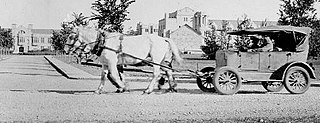 W
WA Bennett buggy was a term used in Canada during the Great Depression to describe a car which had its engine, windows and sometimes frame work taken out and was pulled by a horse. In the United States, such vehicles were known as Hoover carts or Hoover wagons, named after then-President Herbert Hoover.
 W
WBlinkers, sometimes known as blinders, are a piece of horse tack that prevent the horse seeing to the rear and, in some cases, to the side.
 W
WA carriage is a private four-wheeled vehicle for people and is most commonly horse-drawn. Second-hand private carriages were common public transport, the equivalent of modern cars used as taxis. Carriage suspensions are by leather strapping and, on those made in recent centuries, steel springs. Two-wheeled carriages are informal and usually owner-driven.
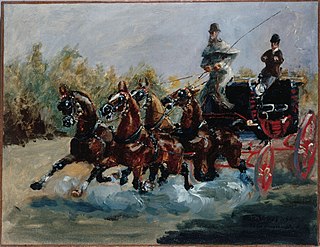 W
WCarriage driving is a form of competitive horse driving in harness in which larger two or four wheeled carriages are pulled by a single horse, a pair, tandem or a four-in-hand team.
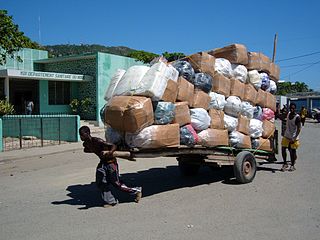 W
WA cart or dray is a vehicle designed for transport, using two wheels and normally pulled by one or a pair of draught animals. A handcart is pulled or pushed by one or more people.
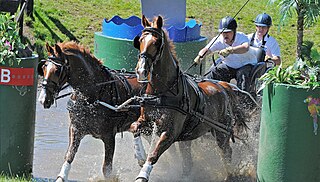 W
WCombined driving is an equestrian sport involving carriage driving. In this discipline, the driver sits on a vehicle drawn by a single horse, a pair or a team of four. The sport has three phases: dressage, cross-country marathon and obstacle cone driving, and is most similar to the mounted equestrian sport of eventing. It is one of the ten international equestrian sport horse disciplines recognized by the Fédération Équestre Internationale (FEI); combined driving became an FEI discipline in 1970.
 W
WCrotal bells are various types of small bells or rattles. They were produced in various Pre-Columbian cultures. In Europe they were made from probably before the early Middle Ages and though many founders cast bells of this type, the Robert Wells bell foundry of Aldbourne, Wiltshire produced the largest range. The first medieval designs came in two separate halves into which a metal pea was introduced and the two halves were then soldered or crimped together. Somewhere around 1400 they were cast in a single piece with a ball of metal inside.
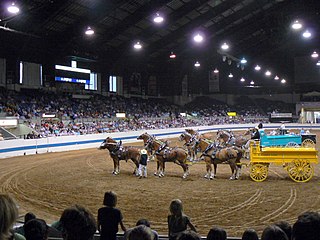 W
WDraft horse showing refers to horse shows exclusively for horses of the draft horse breeds. In North America, though a small number of draft horses are also shown under saddle, the term "Draft horse showing" refers to a specific horse show competition that primarily features driving exhibitors presenting their horses to be judged in harness. Worldwide, some draft horse shows also feature riding classes.
 W
WFine harness is a type of driving competition seen at horse shows, that feature light, refined horses with high action. Popular breeds in this event include the American Saddlebred, Morgan, Arabian, Dutch Harness Horse, and Hackney (horse).
 W
WA horse-drawn vehicle is a mechanized piece of equipment pulled by one horse or by a team of horses. These vehicles typically had two or four wheels and were used to carry passengers and/or a load. They were once common worldwide, but they have mostly been replaced by automobiles and other forms of self-propelled transport.
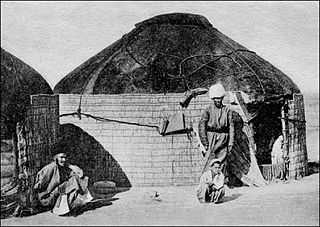 W
WA kibitka is a pastoralist yurt of late 19th century Kyrgyz and Kazakh nomads.
 W
WCarlo Mascheroni is an Italian equestrian and sportsman who competes at the international level in horse-driving.
 W
WThe Mossman Carriage Collection is a museum housing a collection of horse-drawn vehicles in Stockwood Park, Luton, Bedfordshire. It is the largest collection of such vehicles in the United Kingdom, and includes original vehicles dating from the 18th, 19th and 20th centuries.
 W
WNIC Zuidlaren is an international horse riding competition in Zuidlaren, the Netherlands. NIC Zuidlaren is the abbreviation of Noordelijk Internationaal Concours hippique Zuidlaren (Dutch), which might be translated in English as Northern International Equestrian Contest Zuidlaren. In English NIC Zuidlaren is the common name to be used for the event. Zuidlaren stands for the name of the village where the contest takes place. Zuidlaren is a village in the north of the Netherlands, which is why the contest refers to 'Northern' in its name. The realization of the event is largely under control of event organization BCM. NIC Zuidlaren offers international equestrianism in 3 different disciplines: jumping; dressage and combined driving.
 W
WRoadster is a type of driving competition for horses and ponies where the horse and exhibitor appear in equipment similar to that used in harness racing. It is derived from the historical use of certain horses hitched to light carts that traveled quickly from one place to another, often racing on ordinary dirt roads, hence the name. The term is also used to describe the horse used for such competition. Horses pull a light sulky and drivers wear racing silks. However, the exhibitors do not race. Instead, they perform in an arena at horse shows at trotting gaits that include a slow jog, a medium speed "road gait," and a rapid and long-strided but controlled trot referred to as showing "at speed." Animals are evaluated on performance and manners.
 W
WScurry driving is a fast-paced equestrian sport in which a pair of ponies pull a carriage around a course of cones in an attempt to get the fastest time. The full name of the sport is Double Harness Scurry Driving.
 W
WA sulky is a lightweight cart with two wheels and a seat for the driver only but usually without a body, generally pulled by horses or dogs, which is used for harness races. The term is also used for a light stroller, an arch mounted on wheels or crawler tracks, used in logging, or other types of vehicle having wheels and usually a seat for the driver, such as a plough, lister or cultivator.
 W
WTandem, or in tandem, is an arrangement in which a team of machines, animals or people are lined up one behind another, all facing in the same direction.
 W
WA troika is a traditional Russian harness driving combination, using three horses abreast, usually pulling a sleigh. It differs from most other three-horse combinations in that the horses are harnessed abreast. The middle horse is usually harnessed in a horse collar and shaft bow; the side horses are usually in breastcollar harness. The troika is traditionally driven so that the middle horse trots and the side horses canter; the right-hand horse will be on the right lead and the left-hand horse on the left lead. The troika is often claimed to be the world's only harness combination with different gaits of the horses.
 W
WVozok (возок) is a type of closed winter sled that was used throughout Russia until the late 19th century. With the aim of reducing heat loss, the vozok usually had very small windows and sometimes a furnace to keep it warm. Inside it was quite dark.
 W
WA whippletree, or whiffletree, is a mechanism to distribute force evenly through linkages. It is also referred to as an equalizer, leader bar, or double tree. It consists of a bar pivoted at or near the centre, with force applied from one direction to the pivot and from the other direction to the tips. Several whippletrees may be used in series to distribute the force further, such as to simulate pressure over an area as when applying loading to test airplane wings. Whippletrees may be used either in compression or tension. They were also used for subtraction and addition calculations in mechanical computers. Tension whippletrees are used in artful hung mobiles, such as those by artist Alexander Calder.